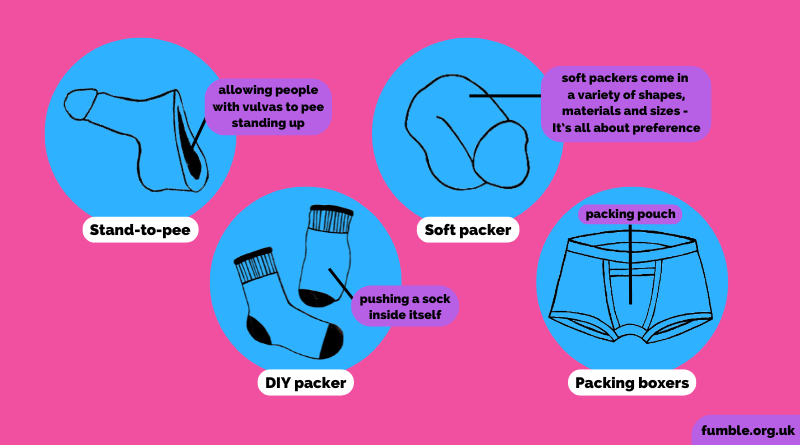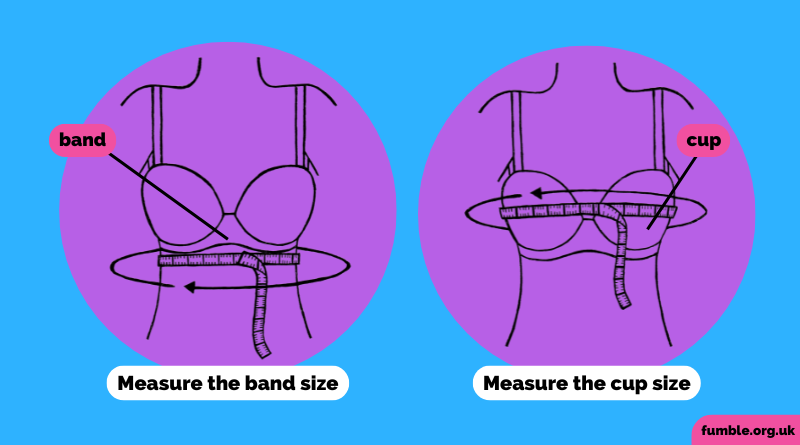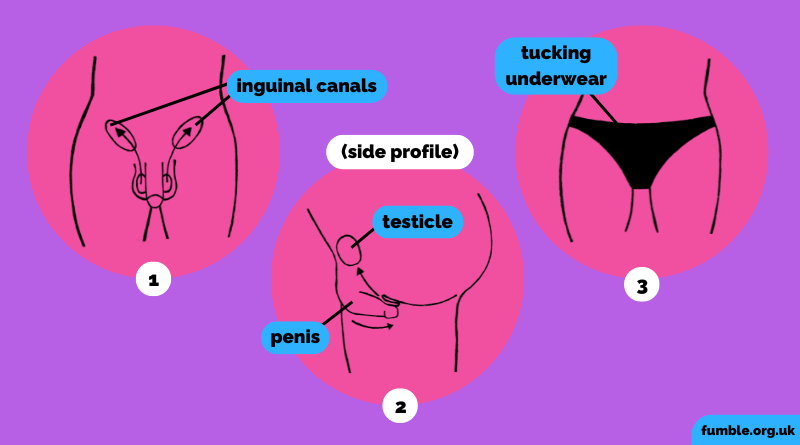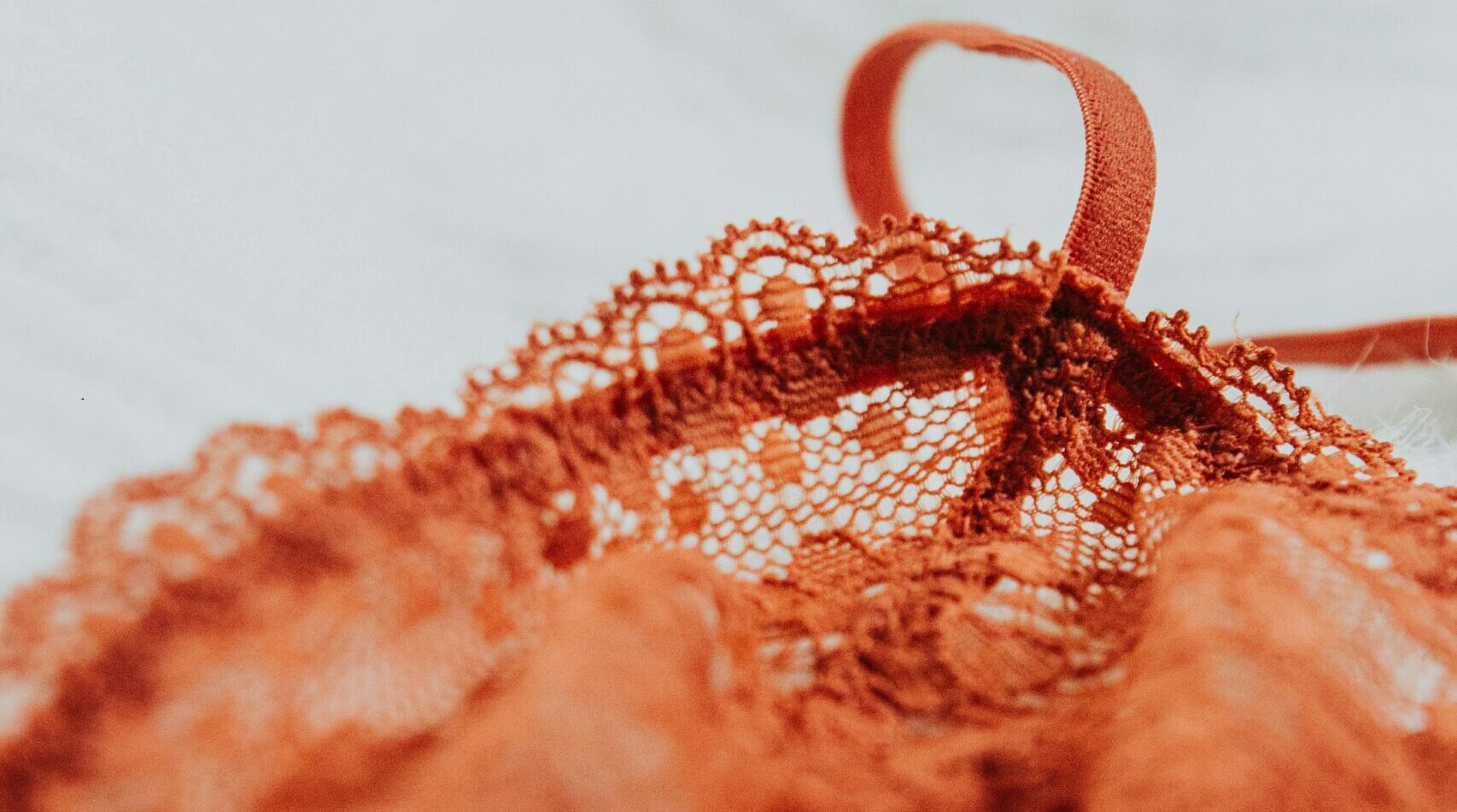How to affirm your gender identity safely
Here are some tips on staying safe if you want to tuck, pack, wear a binder or a bra
Self-expression and shaping the way we look to match the way we feel can be really important. It can spark feelings of gender euphoria and help us to feel seen.
But it’s crucial to do this in a healthy way, and to look after our bodies. Remember: gender expression does not equal gender identity.
Here are some tips on staying safe if you want to bind your chest, tuck or pack, and how to find the right bra size.
Binding
Binding is the act of compressing the soft tissue in the chest to create a flat look. For many people, this can lessen feelings of dysphoria and make them feel more confident.
Most people use something called a chest binder, bought online from shops like Spectrum or Amor. (We link to several retailers in this piece because they have some great guides on their sites and sell gender-inclusive items, which we know are often harder to find. But we’re not affiliated with them and we don’t profit from these links.)
There are some precautions to take if you do decide to use a chest binder. Because you are compressing your chest, you are also compressing your ribs and restricting movement.
To stay safe, don’t bind for longer than 8 hours at a time, and during hours where you do wear a binder, remember to take regular breaks (as many as possible) and stretch.
Here are some tips to help you bind safely:
- Use a purpose designed, properly sized binder.
- Ensure it fits correctly. It shouldn’t be too tight, and definitely shouldn’t impact breathing or cause pain. There are some tips on how to measure yourself for a binder in Gendered Intelligence’s Knowledge is Power guide. If you’re in between sizes, always go up a size.
- Full length binders are better if you have a lot of chest tissue or are plus size.
- Reduce the time spent wearing a binder as much as possible, and take whole days off wearing a binder where possible.
- Never sleep in a binder.
- Never exercise when wearing a binder.
- White binders are much better in the summer and warmer weather, because they absorb less heat.
We strongly recommend that you don’t use bandages, tape or anything that isn’t an actual chest binder, because it can cause skin damage and restrict breathing. Elastic bandages in particular are made to tighten and constrict, so as you breathe, they get tighter and tighter, and can cause a lot of damage.
We know that not everyone can afford to buy a chest binder, and it can be especially tempting to do DIY binding in this situation, but instead try to find organisations that provide reduced cost or free binders like Spectra London.
Packing
Packing involves making a bulge in your pants with the use of a ‘packer’ to create the look (and sometimes feel) of a penis.
There are many types of packers, depending on whether your focus is how realistic it feels, how it looks, how comfy it is to wear, how long it’ll last, or how much it’ll cost. The main types are:
- Soft packers
- DIY packers, like socks or something similar
- STP (stand to pee)
- Packing boxers
Packers come in lots of different shapes, sizes, and colours, depending on the purpose of packing and what you’d prefer.
Instead of immediately buying a packer, it can be useful to try out DIY options like socks. This can help you decide what works for you and whether you want to invest in buying a purposely designed packer. Remember, it’s completely valid (and cost-effective!) to use socks.

Soft packers:
There are various soft packers made from a very flexible plastic called elastomer. They usually have a very realistic look and feel, and come in different skin tones.
A downside of these packers is that they have to be kept in place by tight-fitting underwear, a jock-strap, or harness.
There are also soft packers made from silicone that are a great option as well. They’re often a bit more expensive but could be an excellent investment when you know which size and shape fit your needs.
They’re usually more durable, and have fewer imperfections, making them look a bit more realistic. They can also withstand boiling water, so can be easily washed (even in the dishwasher!). With proper care, these packers can last you a lifetime.
STP packers:
Some packers prioritise functionality (peeing, to be exact). These are commonly known as Stand-to-Pee (STP) devices, which, as the name suggests, make urinating while standing possible.
These packers are hollow on the inside and have a bowl at the base in which to pee. These might not suit everybody, but they can feel very liberating for some.
Packing boxers:
These boxers have the packer included, usually in the front pockets which creates a bulge. This is often removable, and some also have a hidden inner pant for period protection too.
Here are some tips to help you wear packers safely:
- Make sure to keep your packer clean, as it’ll be so close to your genitals. Clean it regularly with mild soap and warm water, or follow the manufacturer’s instructions (some can go in the dishwasher, but double check before throwing it in!).
- Look after the skin around the packer too, keeping it clean, dry, and moisturised (this will help to prevent chafing).
- If the packer is going to sit directly against your skin, consider using something as a barrier, like a condom or packer ‘pouch’. This will help to look after your skin and make cleaning easier.
- It may be worth buying a comfortable harness or specialised underwear to keep your packer in position.
- Be aware that doing sports or physical activity may impact the packer, moving or loosening it. Make sure the packer is secure if you’re going to wear it while exercising.
Wearing a bra
Knowing how to find the right bra size can be incredibly difficult (this goes for cis girls and women too!). If you’ve never done it before, or been told how to do it, this can be really nerve racking.
So let’s get into it. There are two parts to a bra size:
- The band size (e.g. 32, 34, 36): if you wrap a tape measure around your chest, how many inches is it?
- The cup size (e.g. A, B, C): the size of your breasts
From this, we get bra sizes with both a number and a letter. For example: 32A, 40C, 36DD.

Working out your band size:
Using a tape measure, measure tightly around your ribcage. Add 3 inches to this measurement, for example if your ribcage measurement is 31 inches, your band size is 34. If you get an odd number, go up to the next band size.
Working out your cup size:
Using a tape measure, measure loosely around the fullest part of your chest. Then subtract your band size from this, for example if your ‘fullest’ measurement is 37 inches and your band size is 34 inches: 37-34 = 3 inches. Find your number in the list below to get your cup size:
- 0”: AA
- 1”: A
- 2”: B
- 3”: C
- 4”: D
- 5”: DD/E
- 6”: DDD/F
If your band size is 34 and your ‘fullest’ measurement is 37, your bra size is: 34C.
It’s important to wear bras that fit properly, not just because they look better but for your physical health too. Bras that don’t fit properly can cause back, neck and shoulder pain, affect your breathing, and make your breasts sore (especially if you’re on hormones).
Tucking
Tucking flattens the space between the legs, creating a shape that some people find more comfortable, gender affirming or aesthetically pleasing. This is for anyone who wants to do it, regardless of your gender or presentation.

For some people, tucking is an important part of gender affirmation and helps to relieve dysphoria, and other people only do it rarely. Some people will tuck every day, and for other people it might be for specific occasions, or to suit a particular outfit or item of clothing.
Tucking doesn’t mean you identify in a particular way and it’s always important to remember that gender expression does not equal gender identity.
As with anything to do with genitals, it’s a good idea to start slowly and see how you go. It’s totally okay if it feels weird at first. But, if at any point you feel pain or discomfort from tucking, stop what you’re doing, or find a private space to let your tuck back out and, if you can, take a break.
You might also decide that tucking isn’t for you, and that’s absolutely okay. If you want some more information on how to tuck, Zoah has a handy tucking guide.
Staying safe
Staying safe while expressing yourself is essential. We hope these tips will help you to take care of your body while exploring the different ways you can express your gender identity.
Charlie, he/him
This article is part of our “Am I Trans?” Translating Sex, Identity & Relationships content series: supporting trans+ young people to access sex and relationships education that is relevant to their experiences and needs. Discover the full series here.
We use the term trans+ in our articles as an umbrella term intended to incorporate all transgender, non-binary, agender and genderfluid identities.
Some of the content addresses potentially triggering topics, such as transphobia and gender dysphoria. We’ve added specific content warnings to these pieces, but please take a moment to check in with yourself and how you’re feeling before diving into the series.
Other support
- Discover the full series
- Support & resources for trans+ young people
- Switchboard helpline – for anyone, anywhere in the country, at any point in their journey to discuss anything related to sexuality and gender identity
- Gendered Intelligence – Knowledge is Power resource for young trans+ people
Read more
Last Reviewed 22 April 2024
Image Credit: Maeliss Demaison via Unsplash







